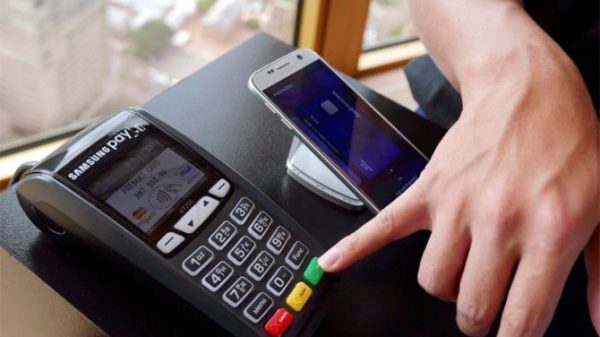“Zomato Gold, in fact, has led to a reduction in MTUs [monthly transacting users] and not an increase. While the frequency [of transactions] goes up, but the number of people ordering typically, we have seen in the past, goes down,” said Akshant Goyal, Chief Financial Officer of Zomato in answer to a question by an investor about the decline in the number of MTUs.
Goyal shared this information during a company call with investors where people also asked about the after-effects of BlinkIt’s riders’ protests, among other things. MediaNama has listed some of the high points from this call and the letter to stakeholders sent by the company earlier.
STAY ON TOP OF TECH POLICY: Our daily newsletter with the top story of the day from MediaNama, delivered to your inbox before 9 AM. Click here to sign up today!
On Zomato
Reduced MTUs due to Zomato Gold: An investor asked about the decline in Zomato’s Monthly Transacting Users (MTUs). Goyal answered that while the month-on-month trend for MTUs shows a downward trend, the year-on-year number of transacting users shows an upward trend. Goyal said the MTU decline is because of the clubbing of orders from households that have a single Zomato Gold membership. Still, Zomato Gold, which is live in almost 50 cities, contributes to 75-80 percent of the company’s business. So, while the frequency of orders goes up, the number of people ordering as per Zomato’s records goes down.
Other reasons cited for the reduced MTUs were:
- Fewer days in the beginning of the year due to February
- Shutting down of the bottom 225 cities as reported in the last quarter due to poor performances
- Marketing expense to focus on higher quality of new customers
- Withdrawal of human support interface for the most abusive cohort of customers
Zomato’s contribution margin nearly tripled since FY22: Zomato went from earning INR 6.6 in FY22 to INR 18.5 in FY23. The company did so by increasing: commission revenue by INR 2.7 per order, and ad and other revenue by INR 3.6 per order. Similarly, it reduced: customer delivery charges by INR -0.3 per order, delivery costs by INR 0.7 per order, and discounts and other variable costs by INR 5.2 per order.
“We expect improvement to contribution from all of these things as we move from INR 18.5 per order contribution to whatever we get to by the end of next year,” said Goyal.
ONDC and other networks unlikely to affect Zomato’s growth: Goyal anticipated no risks from developing networks like ONDC, Waayu because “direct ordering anyways exists.” A lot of Zomato’s restaurant partners get a large number of orders directly placed with them through phone, their own website, apps. Goyal said the take rate or commission fee on those orders is technically zero.
“Broadly, with our take rates, the mission is to be competitive, and we are lower than what the competition is charging. So, as we continue to add more value to restaurant businesses, we expect some improvement in commission revenue going forward,” said Goyal.
Zomato considers increasing delivery radius: Goyal said that increasing the delivery radius will give customers more choices and result in more orders. Similarly, if delivery charges are lowered it can stimulate demand. However, both these customer delivery charges or delivery costs have not changed much over the last year.
Is Zomato going to provide home services? In a letter to stakeholders, Zomato also answered queries around talks of the company entering the home-services business like the Urban Company. Company representatives said Zomato is considering the domain as a new experiment where neighbourhood services like electricians, plumbers, etc. are more accessible to customers.
“At this point, this is not a big decision at our end. We will keep you updated on the progress here, if any,” said Albinder Dhindsa, Founder of BlinkIt, in the letter.
On BlinkIt
BlinkIt uses ChatGPT for user services: BlinkIt representative Dhindsa said the platform uses generative AI and machine learning technologies like ChatGPT, Midjourney, and Stable Diffusion to create a recipe discovery feature.
“That is an additional use case that we think customers really think is adjacent for them. We already use a significant amount of AI within both our supply chain systems as well as within our customers’ personalization and recommendation systems,” he said, adding that the company is looking to scale it to other parts of the supply chain or customer service ecosystems.
BlinkIt claims minimal impact of rider protests: BlinkIt expects a “fairly minimal” impact of the protests carried out by gig workers even though it conceded that some stores were shut for a few days. Dhindsa said that the shutdowns were for less than two days in most places.
“The primary reason that we made this change was because we had old constructs that were put in place in 2020, when we started the dark store business, which allowed some partners to be able to earn a lot more without putting in the same effort that all the other partners are putting in. We wanted to remove that, and that led to some unrest on the ground. But we expect that not to be a factor in our overall financial performance for the quarter,” he said.
Lesser rider-logins due to seasonality, says BlinkIt: Company representative Dhindsa said that rider login was still not at full capacity due to summer time. He said logins lower with the onset of summer as people adjust to the “higher temperatures in northern India.” However, Blinkit’s ‘ability to supply to customers’ was back at 100 percent, said Dhindsa.
When asked about the seven percent reduction in delivery partner numbers since Q2, Goyal said, “The number of active partners may go up or down depending on how many hours they’re spending with us. The nature of fleet might change from quarter-to- quarter depending on seasonality and various other factors, and in some quarters, you might have a much larger part time fleet as compared to others.”
Meanwhile, he said log-in hour numbers have a linear trend with the figure growing every quarter. However, this number is not disclosed by BlinkIt.
Average order value (AOV) improves as customers use platform more often: As per Zomato’s datasets, lower average order value is caused by low AOVs from new users. As users mature over time, the categories they buy from increase and lead to higher AOVs.
“It’s actually an inverted curve that a new user will have a much lower AOV and as they become used to the platform, their purchases on the platform also keep going up,” said Dhindsa.
BlinkIt lost INR 14.2 per order in Q4 of FY23: BlinkIt reduced its losses from INR 91.4 per order in the first quarter of FY22 to INR 14.2 per order in the fourth quarter of FY23. To do so, the company increased commission, ad and other revenue by INR 15.3 per order and customer delivery charges by INR 3.6 per order. At the same time, it decreased dark store and replenishment expenses by INR 48.9 per order, last mile delivery and other variable costs by INR 8.6 per order and customer acquisition spends by INR o.6 per order.
Gross order value doubled after revising efficiency leverages: According to company representatives, the cost reduction helped the stores increase their gross order value (GOV) of about INR 15,000 per square foot per quarter to over INR 30,000 of GOV per square foot.
“What makes our throughput per sqft so high? Three reasons primarily – most relevant and fast moving assortment, store design optimised for deliveries (more storage, less aisle space, efficient order checkout), and multiple replenishment cycles in a day,” said Dhindsa in an earlier letter to stakeholders.
Fast-moving products more important than product mix: BlinkIt said it is currently prioritizing faster services to customers over improving the assortment of products.
“In terms of SKU [Stock-Keeping Unit] mix, we are still tied to our philosophy of keeping ‘high moving low involvement’ purchases on the platform. These are SKUs where consumers have a lot of brand trust, and they need those things frequently as well, so we are squarely focused on making sure that, that is a need that we serve to our customers within 10 minutes,” said Dhindsa.
Focus on scaling-up in existing cities: When asked about plans about scaling up the footprint network design, Dhindsa said that the company is still working on covering 70 percent of Delhi NCR – their largest city. As such, their primary focus will be on scaling up in existing cities in the near future.
BlinkIt estimates reduced dark store expenses: Regarding expenses spent to replenish the dark stores, Dhindsa said that on a per-order basis, the costs will go down. However, “this number overall will not change significantly, but our throughput will increase.” BlinkIt added around 15 stores in the fourth quarter and anticipates more store additions in the future.
This post is released under a CC-BY-SA 4.0 license. Please feel free to republish on your site, with attribution and a link. Adaptation and rewriting, though allowed, should be true to the original.

Also Read:
- From ₹50 To Only ₹15: Blinkit Delivery Executives Protest Compensation Cuts
- Zomato’s Loss Widens As It Deals With Industry-Wide Slowdown In Its Food Delivery Business
- Everything You Need To Know About Zomato’s Performance In Its Latest Quarterly Results
- What Did Zomato CEO Deepinder Goyal Say To Shareholders In Defence Of BlinkIt’s Acquisition?


































